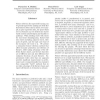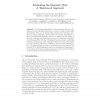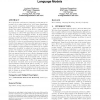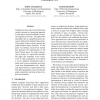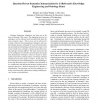111 search results - page 20 / 23 » A Concept-based Adaptive Approach to Word Sense Disambiguati... |
JMLR
2010
13 years 2 months ago
2010
Feature selection for supervised learning can be greatly improved by making use of the fact that features often come in classes. For example, in gene expression data, the genes wh...
SEMWEB
2007
Springer
14 years 1 months ago
2007
Springer
The increased availability of online knowledge has led to the design of several algorithms that solve a variety of tasks by harvesting the Semantic Web, i.e., by dynamically select...
CIKM
2011
Springer
12 years 7 months ago
2011
Springer
Word prediction performed by language models has an important role in many tasks as e.g. word sense disambiguation, speech recognition, hand-writing recognition, query spelling an...
NAACL
2007
13 years 9 months ago
2007
Graph-based semi-supervised learning has recently emerged as a promising approach to data-sparse learning problems in natural language processing. All graph-based algorithms rely ...
IRI
2007
IEEE
14 years 1 months ago
2007
IEEE
Ontology integration, alignment, and reuse are at the heart of Semantic Web vision. The alignment between two ontologies can be achieved easily provided both share the same axioma...
